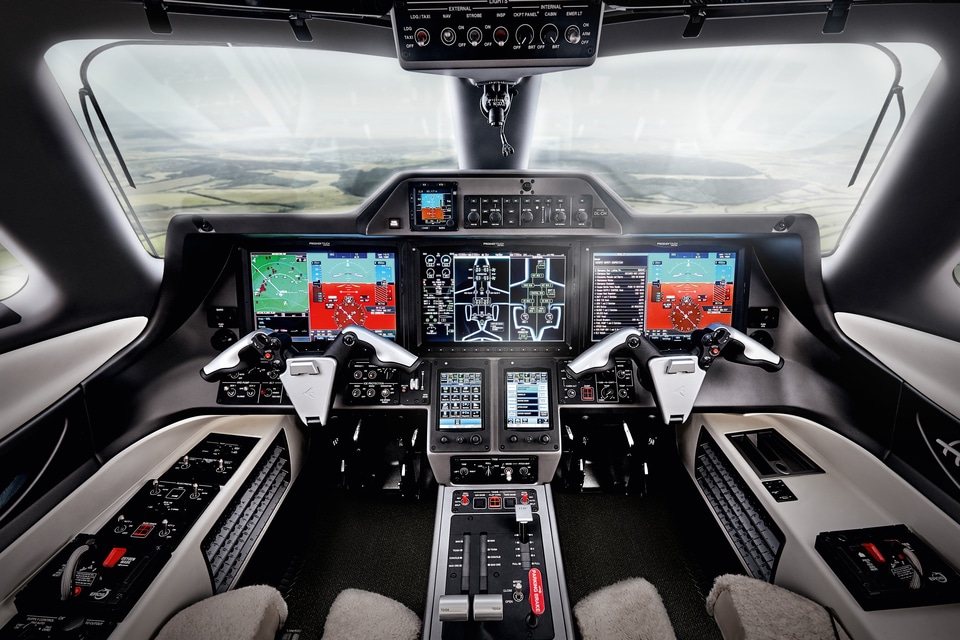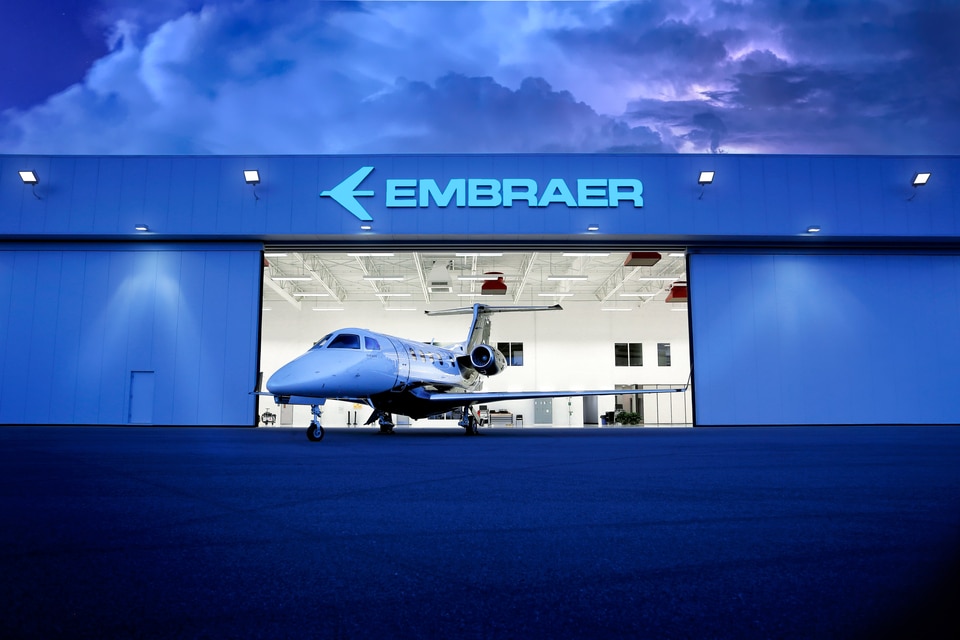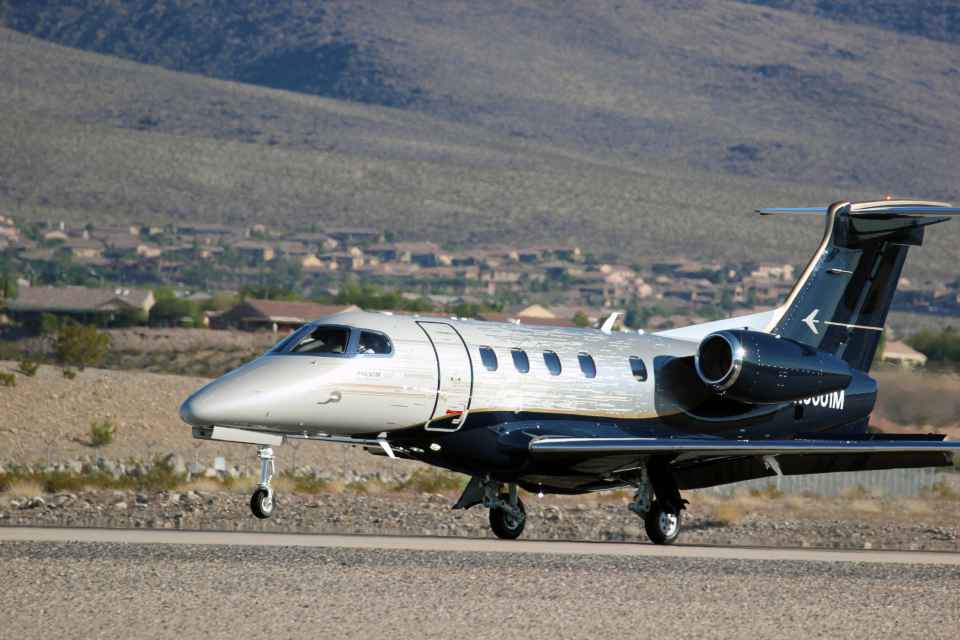Aerospace
This Embraer Jet is the best-selling light jet in the world for eleven years.

Melbourne, Florida, February 22, 2023 – For the 11th consecutive year, Embraer’s Phenom 300 series has become the world’s best-selling light jet, according to the General Aviation Manufacturers Association (GAMA). Embraer delivered 59 Phenom 300 series light jets in 2022 to achieve this milestone, and to date, the series has accrued more than 700 deliveries.
The Phenom 300 series is in operation in 36 countries and has accumulated nearly one million, eight hundred thousand flight hours. These achievements highlight the company’s reputation for safety, quality, continual aircraft improvement, and innovation, with best-in-class capabilities, including range, speed, cabin pressurization, and industry-first technology.
“It’s no coincidence that the Phenom 300 is once again the best-selling light jet in the industry,” said Michael Amalfitano, President & CEO of Embraer Executive Jets. “For 11 consecutive years, it has continued its strong momentum in the market and outperformed our loyal customers—whether through the best-in-class range and speed or by offering the highest residual value of any aircraft in the market. This distinction is a true testament to Embraer’s ability to deliver the ultimate experience to its customers through truly innovative aircraft.”
The Phenom 300E sets the highest standard of excellence in the light jet category. In terms of performance, the new, enhanced Phenom 300E is even faster, capable of reaching Mach 0.80, becoming the fastest single-pilot jet in production, and able to deliver a high-speed cruise of 464 knots and a five-occupant range of 2,010 nautical miles (3,724 km) with NBAA IFR reserves.
Additional technology enhancements include an avionics upgrade featuring a runway overrun awareness and alerting system (ROAAS) ― the first technology of its kind to be developed and certified in business aviation ― as well as predictive windshear, Emergency Descent Mode, PERF, TOLD, and FAA Datacom, among others.

Aerospace
Boeing Transfers Rocket Stage to NASA, Paving Way for Human Moon Mission

Boeing has achieved a significant milestone by providing NASA with the second core stage of the Space Launch System (SLS) rocket.
This crucial component, crafted at NASA’s Michoud Assembly Facility (MAF), is set to propel the Artemis II crew into lunar orbit, marking humanity’s return to deep space after a 50-year hiatus.
The monumental Boeing-built rocket stage, the largest element of the Artemis II mission, will embark on a journey aboard the Pegasus barge, traveling 900 miles to NASA’s Kennedy Space Center.
Comparison of two legendary aircraft B777x vs B747 aircraft:Click here
Upon arrival, it will be meticulously integrated with other essential Artemis II components, including the upper stage, solid rocket boosters, and NASA’s Orion spacecraft within the iconic Vehicle Assembly Building. This intricate integration process is a vital step toward the eagerly anticipated Artemis II launch, slated for 2025.
“Boeing-built products helped land humankind on the moon in 1969, and we’re proud to continue that legacy through the Artemis generation,” remarked Dave Dutcher, vice president and program manager for Boeing’s SLS program. “Together, with NASA and our industry partners and suppliers, we are building the world’s most capable rocket and paving the way to deep space through America’s rocket factory in New Orleans.”
NASA, Lockheed Martin Reveal X-59 Quiet Supersonic Aircraft:Click here
The delivery of Core Stage 2 marks a significant achievement in the evolution of the SLS rocket. Towering over 200 feet and powered by four RS-25 engines, this core stage, coupled with two solid-fueled booster rockets, will generate a staggering 8.8 million pounds of thrust. This immense power is crucial to launching Artemis II and future missions into the vast expanse of space.
The SLS rocket stands unparalleled in its capability to transport both crew and substantial cargo to the moon and beyond in a single launch. Its extraordinary capacity will facilitate the delivery of human-rated spacecraft, habitats, and scientific missions to destinations including the moon and Mars, ushering in a new era of space exploration.
-

 Travel1 week ago
Travel1 week agoAir India to Expand US Operations with Three New Routes After a Decade
-

 Travel2 weeks ago
Travel2 weeks agoWhy We Should Avoid These Stamps in a Passport
-

 Airlines1 month ago
Airlines1 month agoInvestigations Reveal Fake Chinese Titanium in Boeing and Airbus Jets
-

 Tech4 weeks ago
Tech4 weeks agoChina’s CATL Plans 1,800-Mile Electric Plane Launch by 2027
-

 Airport3 days ago
Airport3 days agoTop 10 Largest Airports in the World by Size
-

 Aerospace4 weeks ago
Aerospace4 weeks agoChina’s Fighter Jets Turn Wings into Autonomous Drones
-

 Airlines4 days ago
Airlines4 days agoAir India Rolls Out A350s for Delhi-New York JFK and Newark Routes
-

 Defence3 weeks ago
Defence3 weeks agoBoeing Enhances Chinook with New Engines and Block II Upgrades at $96 Million









